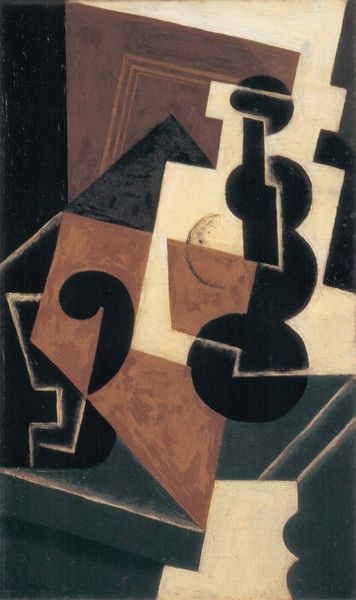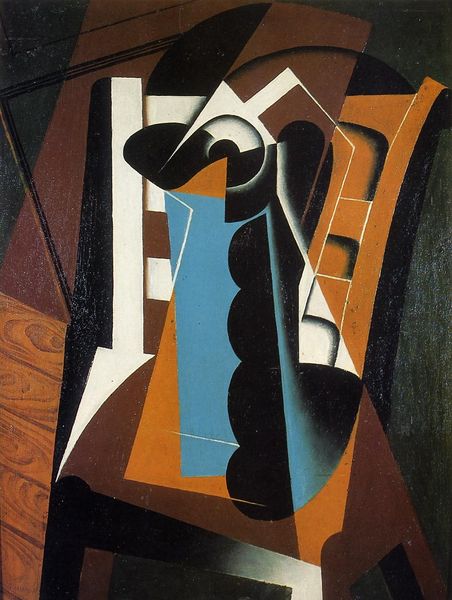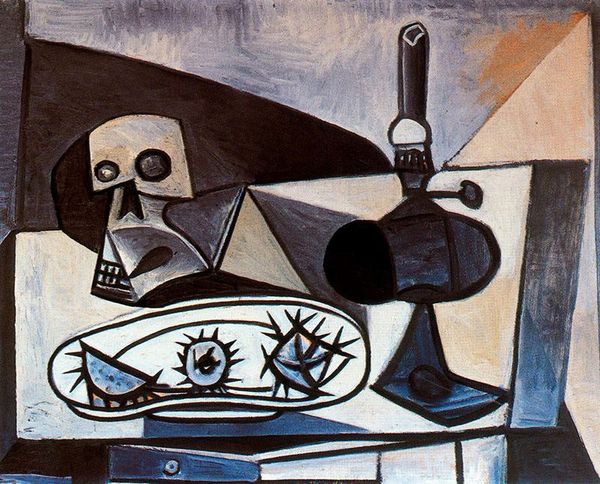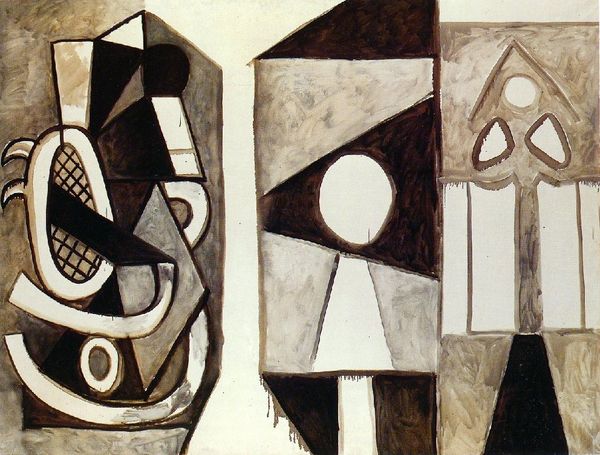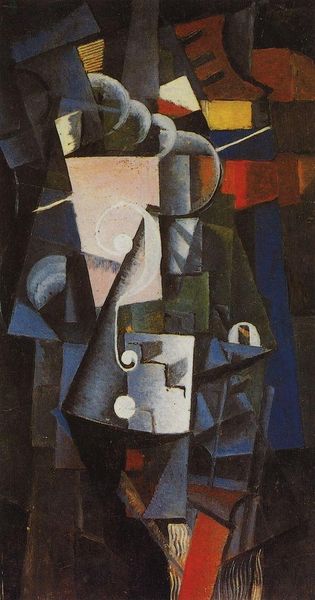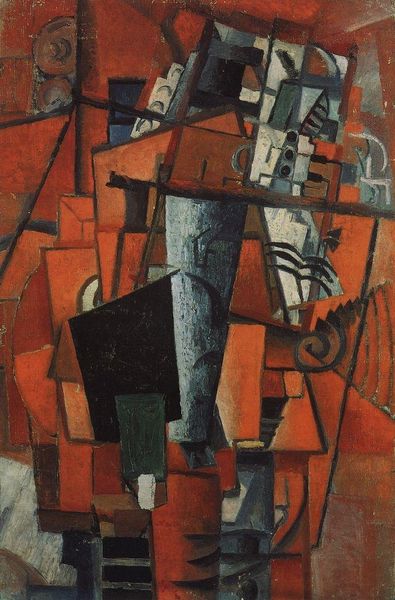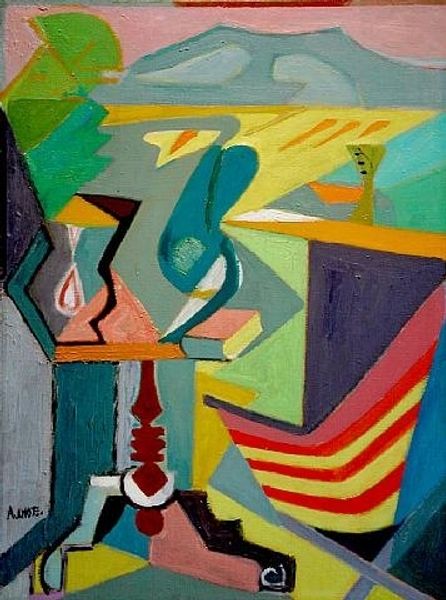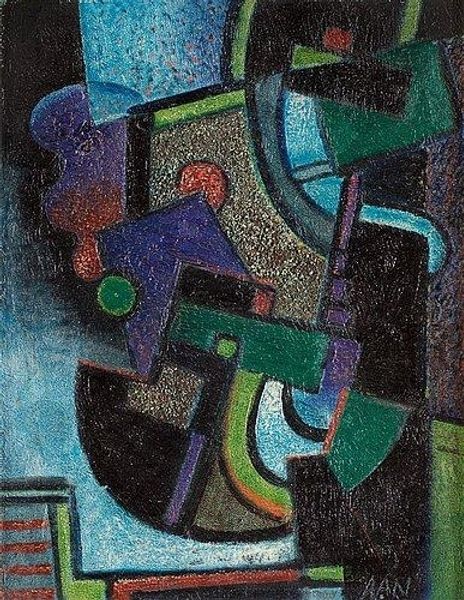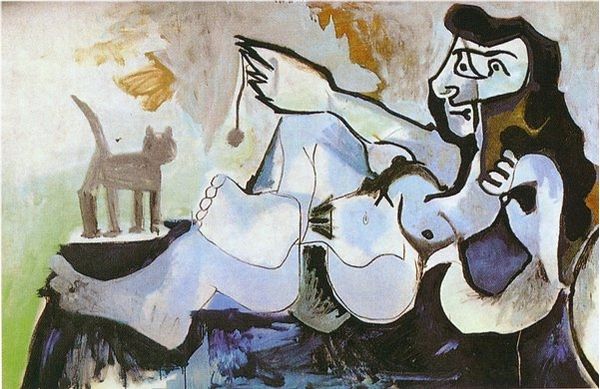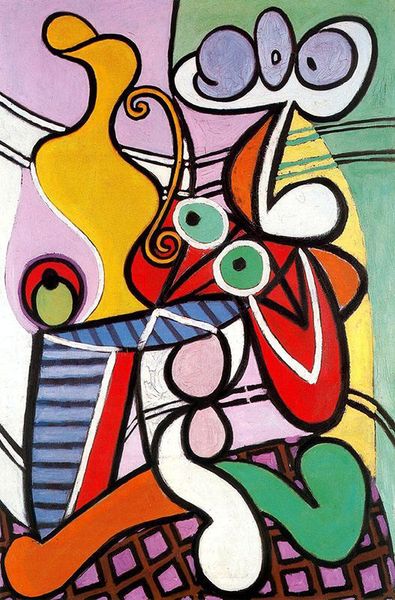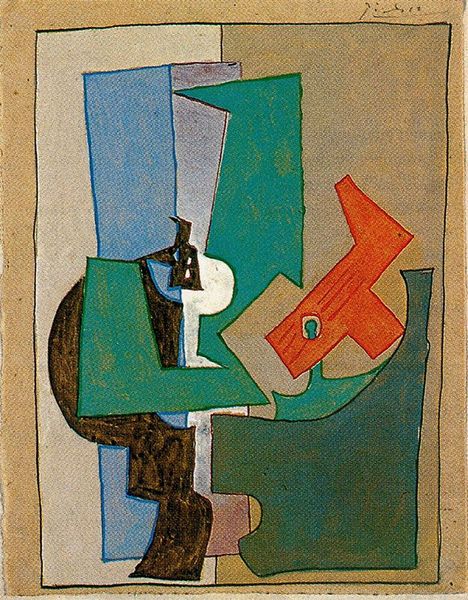
tempera, painting
#
de-stijl
#
tempera
#
painting
#
geometric
#
abstraction
#
modernism
Dimensions: 37 x 52.5 cm
Copyright: Public domain
Curator: Here we have "Kneeling nude", a tempera painting, from Theo van Doesburg. Editor: Well, the palette certainly speaks to restraint, doesn't it? Lots of muted greys and blacks. Geometric shapes dominate—it almost feels architectural, a blueprint perhaps, for the human form? Curator: Doesburg, as a proponent of De Stijl, was deeply invested in abstraction, seeking a universal visual language through geometric forms. It's fascinating how he applies these principles to the traditionally sensual subject of the nude. We could discuss, of course, how materials such as tempera affect color blending which dictates how these tones become almost desaturated. Editor: It certainly disrupts the traditional male gaze. This isn't about objectification, is it? Rather, a dissection of form. I'm interested in the power dynamics inherent in depicting a kneeling figure, typically associated with submission. Yet here, deconstructed and devoid of identifiable features, that symbolism feels destabilized. How do the artistic constraints around color affect gender perceptions? Curator: Precisely. Consider too that tempera offers a matte surface unlike oil paints. So there's no illusionistic depth, no seductive sheen to the skin. The nude is flattened, almost diagrammatic. It shifts our focus to the pure materiality of the work itself and to De Stijl's radical goal to reconstruct art in the new utopian social order. Editor: Thinking about the De Stijl movement within a social context... it seems a kind of quest for objectivity and universality amidst immense socio-political turmoil, and also class disparity. The post-war urge for order perhaps sought an idealized form abstracted from the real world mess. How complicit are abstractionist movements like De Stijl, as a method of maintaining oppressive and patriarchal paradigms, where access to high end materials also speaks to class dominance in production? Curator: That’s the crucial point, isn't it? Even in its quest for neutrality, Doesburg's work becomes implicated in the power structures it seems to evade. We need to challenge such utopian projects—to find out how materiality, such as in this picture using limited pigment tempera paints, comes from a specific and complex cultural setting with societal and social meanings for artists, artwork, and us. Editor: It's so rewarding to reflect on artworks from different critical lenses. It opens our ears to their complicated voices. Curator: Absolutely. It turns passive contemplation into active inquiry.
Comments
No comments
Be the first to comment and join the conversation on the ultimate creative platform.
